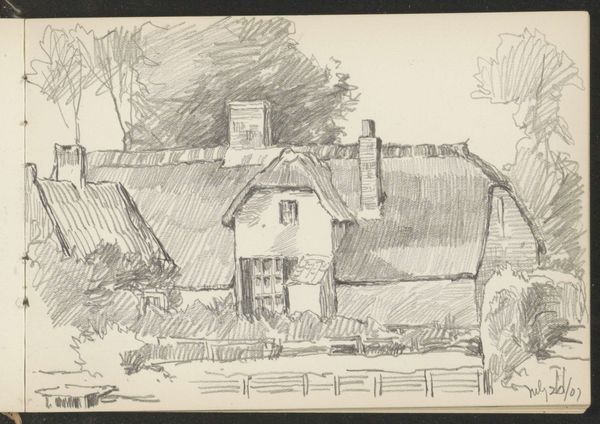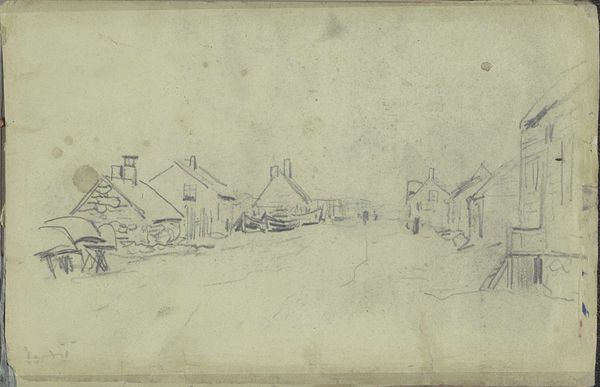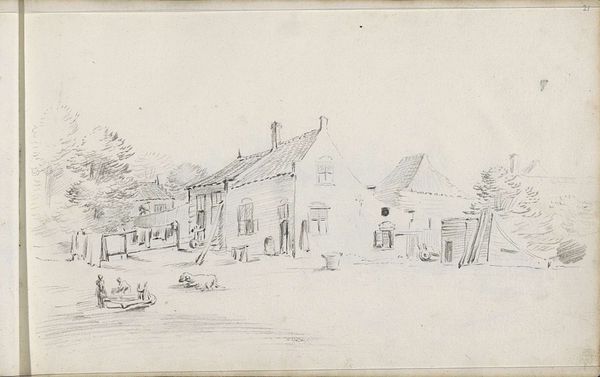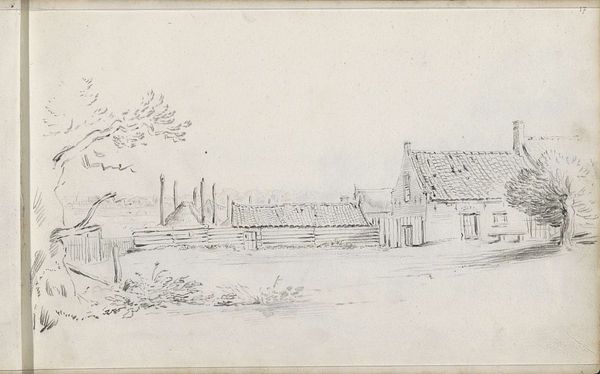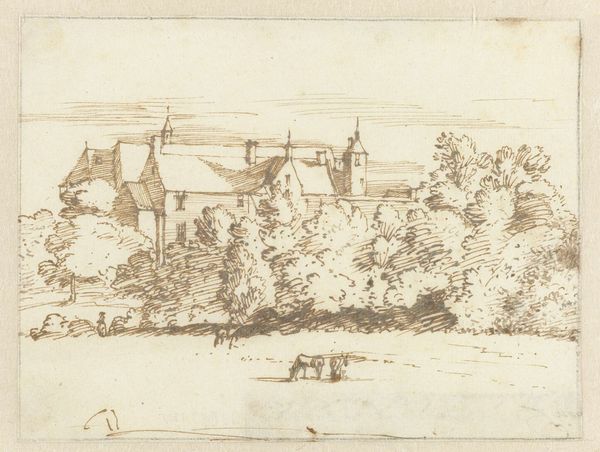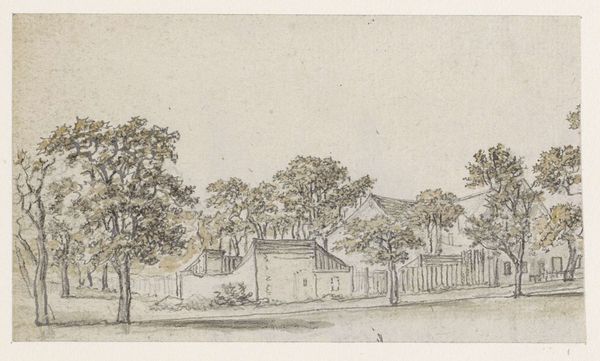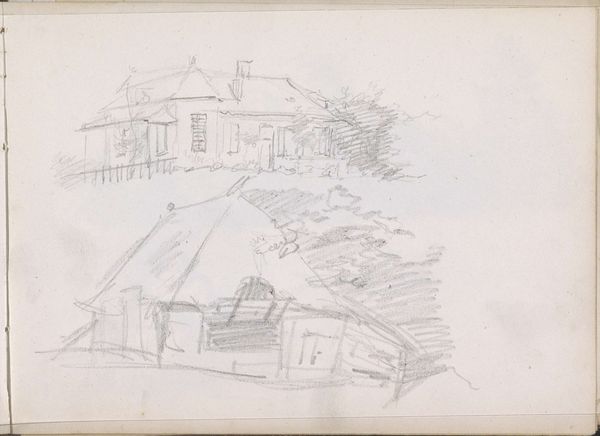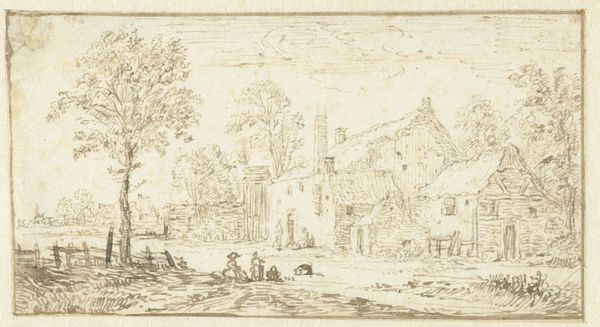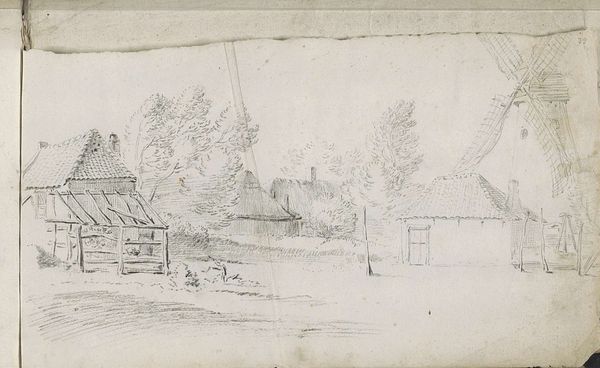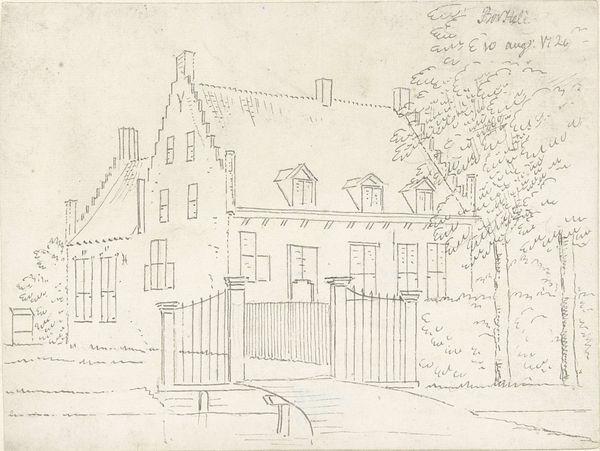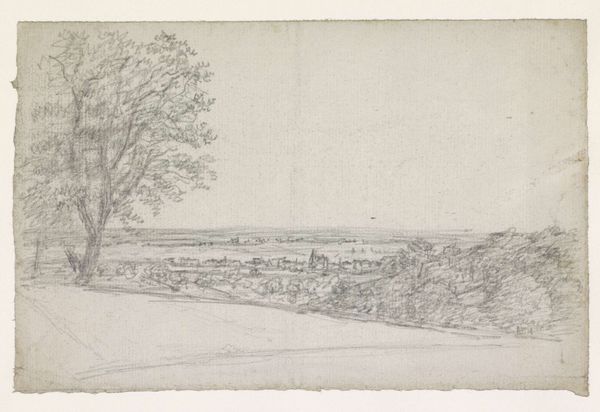
Het dorp Vuilendam bij Molenaarsgraaf in de Alblasserwaard 1720 - 1740
0:00
0:00
drawing, paper, ink
#
drawing
#
baroque
#
landscape
#
paper
#
ink
#
cityscape
Dimensions: height 127 mm, width 201 mm
Copyright: Rijks Museum: Open Domain
Curator: Welcome. We're looking at Cornelis Pronk's drawing, “Het dorp Vuilendam bij Molenaarsgraaf in de Alblasserwaard,” made between 1720 and 1740. It’s an ink drawing on paper, housed right here at the Rijksmuseum. Editor: It's so delicate! The barest minimum of lines conveying this whole village street. There's a sort of hesitant quality to the line work—very intriguing. Curator: Indeed. Pronk was instrumental in shaping Dutch topographical art in the 18th century. This drawing isn't just a pretty picture; it's a carefully considered record. Note the specific details—the rooflines, the fenestration patterns. These document the built environment of the time. Editor: And consider the materiality of those roofs. We've got tile, what looks like some form of thatch... each implies different economic realities, different levels of investment and labour in their construction. The drawing gives us clues about the kinds of resources that were accessible to people then. Curator: Exactly. And his decision to depict this particular village suggests the rise of local pride and the growing importance of regional identity within the Dutch Republic. Views like this became very popular at the time. Patrons were commissioning artwork celebrating their home, expressing civic identity. Editor: This makes you wonder about the labor that went into it. We only see the finished ink on paper, but consider the craftsmanship needed to produce this level of paper at the time; imagine the skill and long hours needed to source the ink and tools to make this precise piece! It challenges our traditional view of high art as purely the product of individual genius, shifting focus towards the skilled trades and systems supporting it. Curator: I agree, examining such works, their subjects, and reception in their context reveals insights into artistic agency and public tastes of the 18th century. Editor: It does provoke questions, doesn't it? Looking at this from a materialist perspective has opened up new layers for me, shifting focus from just "art" to craft, process and society that produced this glimpse of Vuilendam.
Comments
No comments
Be the first to comment and join the conversation on the ultimate creative platform.


